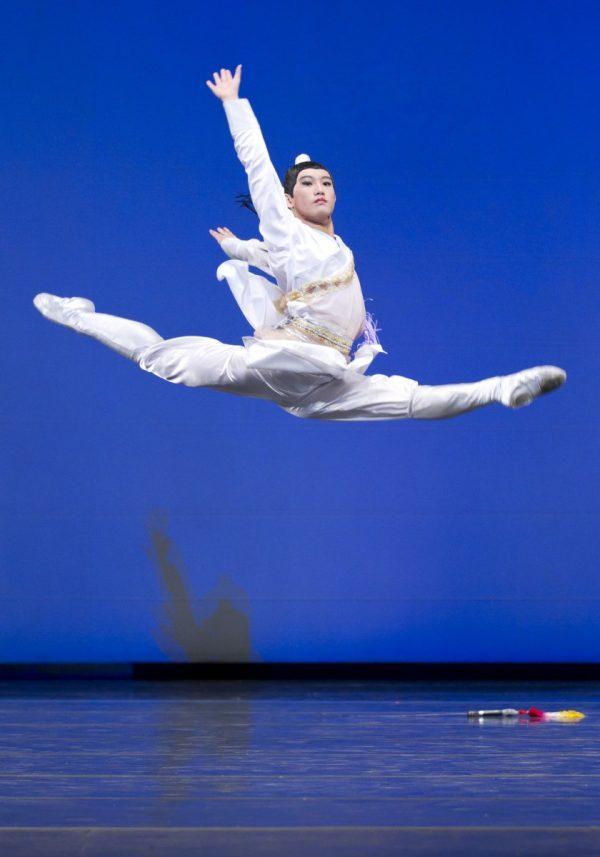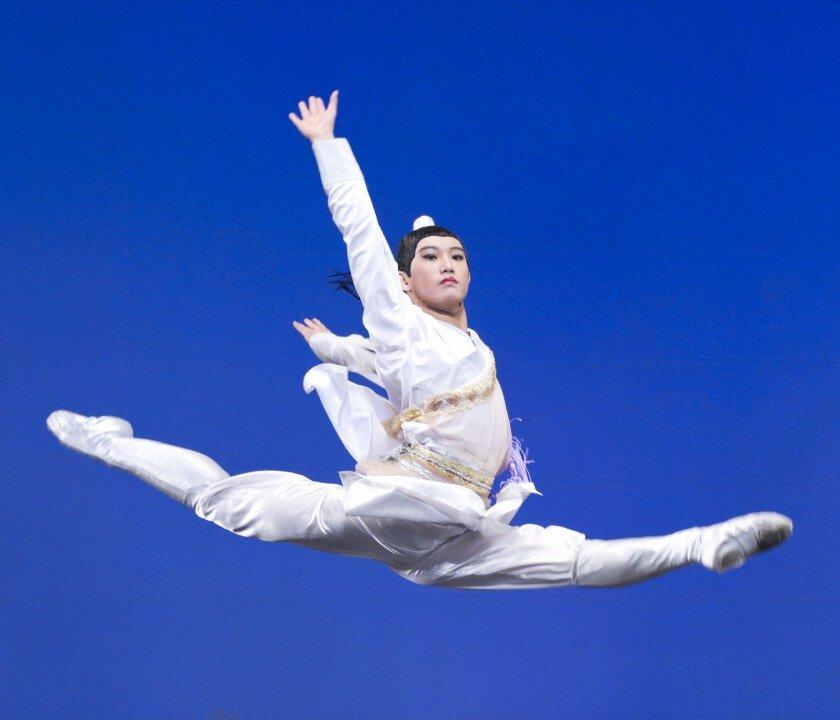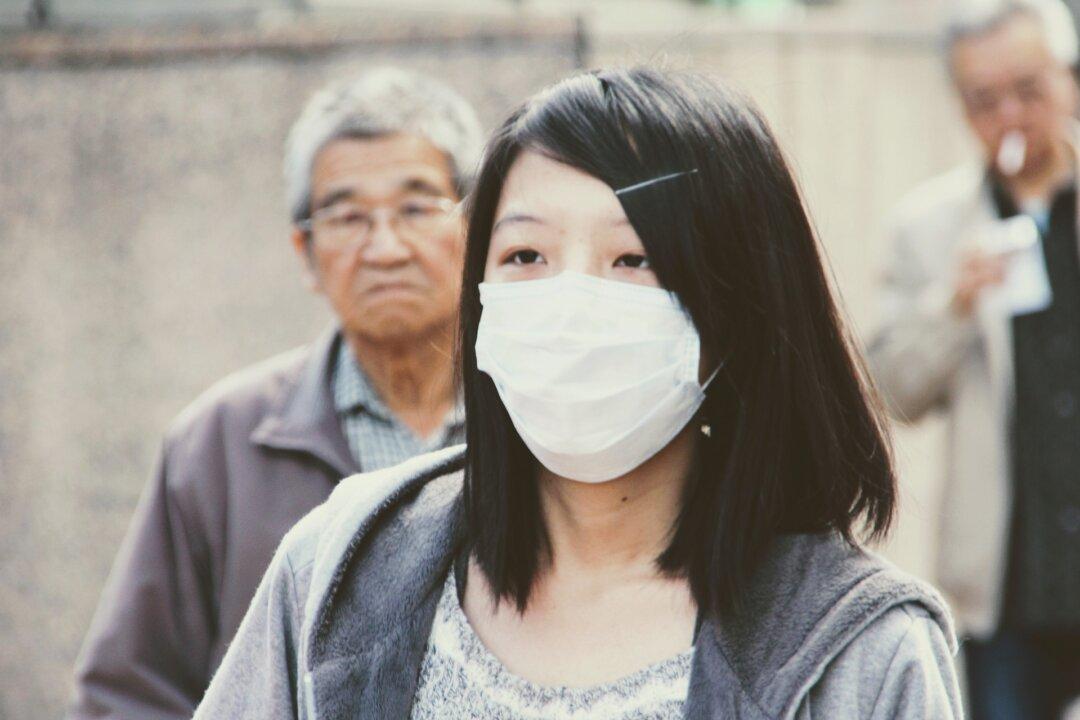When talking about the art of dance he loves so well, Jim Chen (Jun-Cheng Chen), the gold award winner of NTD Television’s 4th International Classical Chinese Dance Competition, glowed with delight. That delight radiates to audiences when Chen performs, giving people the feeling of sunshine and joy. He is, in his own word, “carefree,” and he brings this innocence into his performances.

Jim Chen performing the role of the famous general Han Xin as a youth. Edward Dai/The Epoch Times






